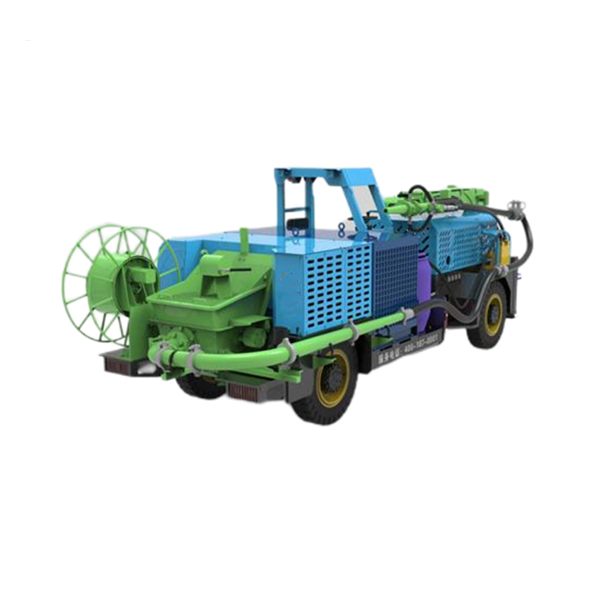
Company:China Mineral Processing & Metallurgy League
Email: sales@hot-mining.com
Phone:+86 18252116933
Fax:+86 10 58646590
Address:Room10811, Floor8, Building A, Galaxy SOHO, Dongcheng Dist, Beijing, P.R.China
Research on Autonomous Driving and Obstacle Avoidance Control Method of Underground Scooptram
Model of Autonomous Operation of LHD
In view of the complexity of LHD and its own operation characteristics, accurate control of the movement path of LHD has become the focus and difficulty of LHD research. At present, it is mainly through laser scanning control method and trajectory deviation calculation control method to combine the target path planning and deviation of scraper operation control. As the trajectory deviation calculation control method does not need more auxiliary equipment, the cost is relatively low, so it is widely used in LHD.
Relationship between Target Path and Tracking Trajectory Parameters of LHD
Underground scooptrams work in underground or underground tunnels. On the one hand, underground scooptrams are limited to travel underground due to uneven underground conditions; on the other hand, there are many underground equipment, such as fans, lighting equipment, electrical switches, etc., which form local obstacles, which makes the scraper not necessarily walk along the wall, but sometimes need to bypass these obstacles. Therefore, it is very valuable to plan the target path of LHD and determine the deviation between the actual path and the theoretical path by using relative position and absolute position.
Generally, an x-y coordinate system is established in the plane where the roadway is located. The speed direction of point P is taken as the driving direction of the vehicle, and the heading angle φg of the scraper is defined as the angle formed by the moving direction and the positive direction of x-axis, and the anti clockwise direction is positive. Curve C represents the tracking track of the scraper, while the theoretically planned path is shown in curve a in Figure 1. In order to avoid obstacles, curve B in Fig. 1 is the local obstacle avoidance target path, and δb0 represents the lateral deflection displacement. The parameter represents the deviation between the actual trajectory direction and the planned path direction, and the larger the value, the more deviation from the travel direction of the planned path. When point P is on the right side of the main path, δ is positive. The parameter reflects the deviation between the actual trajectory and the lateral position of the main target path. The larger the absolute value, the farther the lateral distance from the main target path. Similarly, the lateral position deviation δb can be defined as the distance between the point P of the tracking path and the Pmb point of the local obstacle avoidance target path, and the direction definition is consistent with δ. This parameter reflects the deviation between the actual trajectory and the lateral position of the local obstacle avoidance target path. The larger the absolute value is, the farther the lateral distance from the local obstacle avoidance target path is, and there is δb = δ + δb0. The position coordinate of point P is represented by arc length Sm and transverse deviation δ, which is p (sm, δ). The curvature of point P is expressed in kg, and its direction is: we define it as positive curvature when the curvature center Og is on the left side of the forward direction of the trajectory curve, and the radius of curvature is generally expressed by R. It is positive, otherwise it is negative. Similarly, the curvatures of Rm and Rmb can be defined respectively as the curvature of the main target path in Rm and the curvature of the local obstacle avoidance target path in Rmb. Denoted by km and Kmb, Rm and Rmb are the radii of the corresponding curvature centers Om and Omb. The vehicle speed is measured by a speed sensor mounted on the LHD.
Analysis of Autonomous Driving Control Characteristics
Lateral Position Deviation Limiting Control
When the lateral position deviation is less than 1 m, the control method can achieve fast and stable control. However, when the lateral position deviation is greater than 1, the control method is unstable. In order to make the control take into account the stable and fast function, the lateral deviation should not be greater than 1. It is found that the effect is best when the limiting amplitude is 0.4~0.8.
Double Threshold Improved PID Control
As the name implies, the double threshold improved PID control introduces the lateral position deviation threshold and heading angle deviation threshold value in the traditional PID control strategy. The purpose of this is to eliminate the stability error of PID control, which is most commonly used in engineering, and improve the response speed and control accuracy of the system. Therefore, the lateral position deviation δ B is set in this paper, the threshold value is ϵδ2, and the optimal value of ϵδ2 is 0.1M ~ 0.2m. When the lateral position deviation is greater than ϵδ2, the integral link is not considered; when the lateral position deviation is less than ϵδ2, the integration link is introduced, which increases the ability of the system to eliminate small errors, reduces the adjustment time and eliminates the existing steady-state error. Although the introduction of lateral position deviation threshold can reduce the steady-state error and make the actual path of the LHD closer to the target path, the control system will also lose stability when the heading angle of the LHD is large. Therefore, in order to avoid the increase of overshoot and instability caused by large heading angle deviation, it is necessary to set the threshold value of course angle deviation between 0.03rad and 0.2rad, while the value of ϵβ is between 0.03rad and 0.2rad.
Safety Obstacle Avoidance Based on Fuzzy Control
Basic Concepts of Fuzzy Control Theory
The fuzzy control theory is widely used in the actual production and life. The operator can control the controlled object through continuous learning and accumulating experience. Because the experience is difficult to express in language, it has fuzziness. Fuzzy control theory can also be applied in complex environment.
The Practical Application of Safety Obstacle Avoidance Based on Fuzzy Control
Figure 2 shows the safety navigation map of a mine LHD. Figure 2 (a) is the planned route from the forklift truck at the chute to the target points 1 and 2 in the stope, and figure 2 (b) is the actual motion path of the forklift based on fuzzy control. By comparing the two figures, we can see that when the forklift reaches the target point 1 according to the established route 1, it will encounter a large obstacle on the way, so it must bypass the obstacle to obtain the target point 1 successfully.
Conclusion
According to the different operation models of Underground LHD and the deviation method of obstacles, this paper attached to the starting position and end position of the main target path to avoid obstacles, which provides an effective operation mode for the actual operation of Underground LHD, and greatly reduces the work difficulty of Underground LHD. This method can effectively avoid obstacles and has great similarity with the actual working environment. It can calculate the path of the main target, reduce the deviation of the tracking path, and improve the production efficiency of the underground scraper. This method has high adaptability and reliability.
Contact HOT For Your Mine Projects:
Liv Wang
Email: liv.wang@hot-mining.com
Tel: +86 18227011092
Tiffany Chen
Email: tIffany@miningmes.com
Tel/WA: +86 18282103350
Web: http://www.hotminingepc.com/
Email:sales@hot-mining.com






























